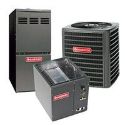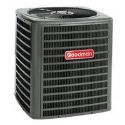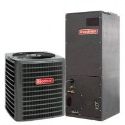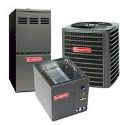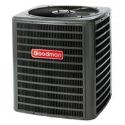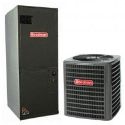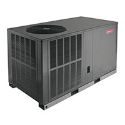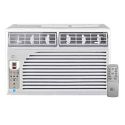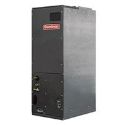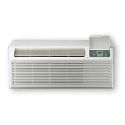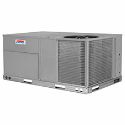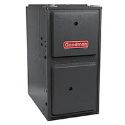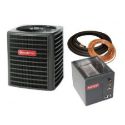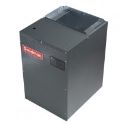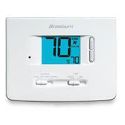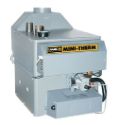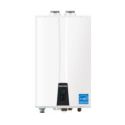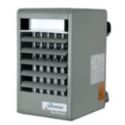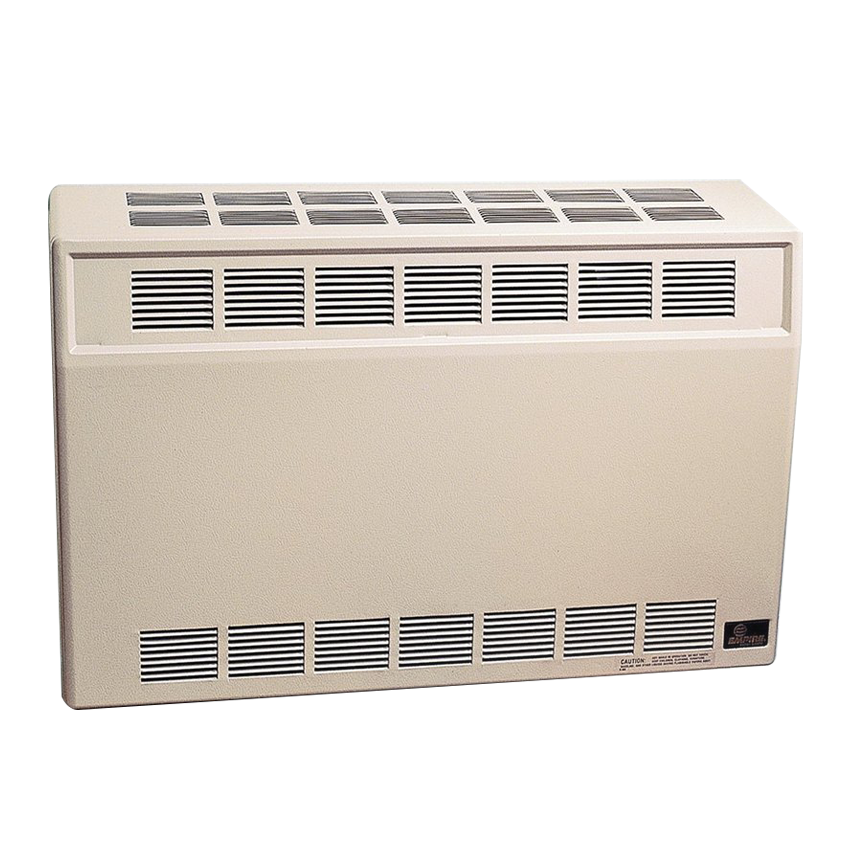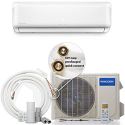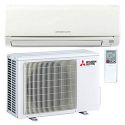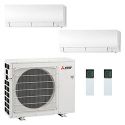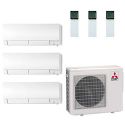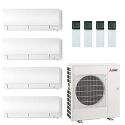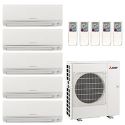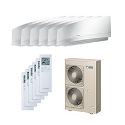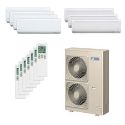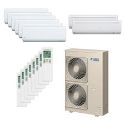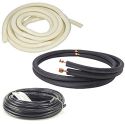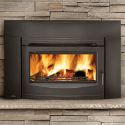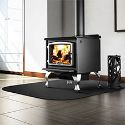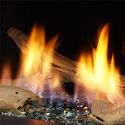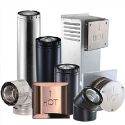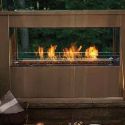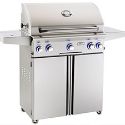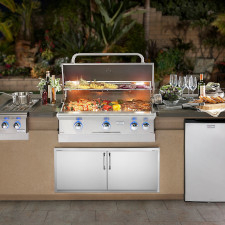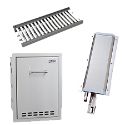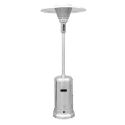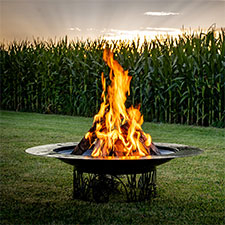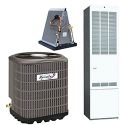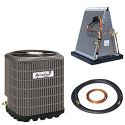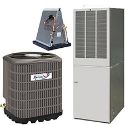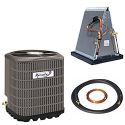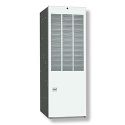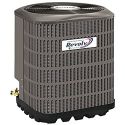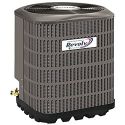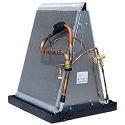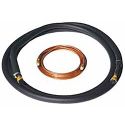If replacing your home or business air conditioning system ranks high on your to-do list, you should know the basics of the AC process beforehand. If you don't know what to look or ask for, you could spend thousands of dollars unnecessarily on equipment, installation and energy.
You needn't rate as an expert in the subject, but a familiarity with the basics of an HVAC system can go a long way in matching your home to the type of air conditioning that suits it best. To help, we've provided an Air Conditioning for Beginner's guide.
Here's what you need to know:
HVAC Basics - The Components
HVAC stands for Heating, Ventilation and Air Conditioning, and regardless of what type of HVAC system you own, the mechanical components that do the work are essentially the same. They can be separate, partially inside or partially outside, or grouped together in one cabinet.
The air conditioning process is a cycle with no beginning and no end. The devices that make it all perform supply-and-demand functions in ways that we all too often take for granted. In the next few paragraphs, we'll provide a home air conditioning diagram of sorts and then briefly explain what happens in the process of cooling or heating your home.
The Condenser/Compressor
The air conditioner condenser is the metal box that sits in your back or side yard contains the condenser and the machine that energizes it, the compressor. You don't see one without the other.
The compressor is a heavy duty pump that pressurizes a gas called a refrigerant, and pushes the refrigerant through a copper tube into the condenser. The condenser includes a heat exchanger which includes dozens of tight loops (called coils) and interfaced with aluminum alloy fins.
The Evaporator Coils
Looking very much like the condenser coils, the evaporator coils receive the refrigerant from the condenser in liquid form. The evaporator coils reside inside the house, either in a closet, attic, basement or utility room. They often are housed in the same cabinet as the air handler.
The Air Handler
The air handler puts the air in air conditioning. Containing a power fan motor and high-output fan blades, the air handler cycles air in and out of the house. It is usually located right next to, or in the same space as the evaporator coils.
The Furnace
The furnace is an optional heat source that works with the AC system. It can be electric, gas or dual-fuel.
The Process of Air Conditioning
Your air conditioning system does not produce cold air. It removes heat. And by the process of elimination, when heat is removed, cold remains.
Refrigerant Under Pressure
Refrigerant is a gas that gets hot (not cold) under pressure. The compressor pressurizes the refrigerant (sometimes called freon) until it gets so hot it cannot remain in its gaseous state. This super-heated liquid moves through the condenser coils and cools again.
Heat Leaves the House
Inside the evaporator coils, the refrigerant makes more twists and turns and cools even more. Heat tends to flow from a region of higher heat to one of lower heat, so room air attaches itself to the fins surrounding the evaporating coils and is shuttled out of the house with the help of the air handler.
Cold Takes Its Place
Heat can't just exit the premises like that without leaving something behind, and what gets left behind is cold. The air handler pulls cold air from the evaporator coils into the rooms.
Putting it in Reverse
In the winter, heat pump air conditioners reverse the heat transfer process. The indoor evaporator coils and the outdoor condenser coils swap jobs, the refrigerant moves in the opposite direction and heat is pulled from the atmosphere (yes, even when it's cold outside) and delivered indoors to the living areas.
What's Right For Your Home?
BTUs Demystified
Air conditioning systems are rated by BTUs (British Thermal Units), a measurement of a unit's capacity. The higher the BTU rating, the larger the area it can serve.
When you consider replacing your AC system, not only should you consider your home's square footage, but also factors that affect the functionality of your system. Do you have adequate insulation, vaulted ceilings or large windows? You probably should bump up your BTU capacity.
Some homeowners make the "more is better" mistake. If your AC system is too large for the space it serves, it will run for a very short amount of time and shut off. You want your system to run for a while to provide thorough dehumidification. A system that doesn't run long enough can lead to humidity build-up, mold, and mildew.
Ductless Mini Split Systems
Mini split systems bypass the ductwork used by traditional systems and utilize the refrigerant lines to apply the heat transfer process to the covered area. The air handler - and there can be multiple air handlers - acts as evaporator coils and blower simultaneously.
Mini split systems are ideal for single rooms, groups of rooms or non-attached areas, like garages. More and more, mini splits are being used for whole-house heating and cooling.
The initial cost for a mini split system is greater, but the energy savings over the years typically offset that expense and end up saving the homeowner money.
Packaged Systems
When space is at a premium, many homeowners and business managers opt for a packaged air conditioner system, where condenser, compressor, evaporator coils and air handler all occupy the same steel cabinet. The cabinet sits outside, on a slab, platform or roof.
Installation
Some mini split systems are do-it-yourself projects, but traditional ac systems are to be installed by HVAC professionals only as required by law.
When considering mini split systems, the presence or lack of ductwork in the home is a crucial factor. Replacing a traditional system with another traditional system makes sense in most situations. But if there is no ductwork, or the advantages of a mini split system - like individualized control for each zone - are important enough to you, then a mini split system is a good option.
Heat Pump or No?
A heat pump will use significantly less electricity than an electric or gas furnace, but may fall short of ultimate comfort on extremely cold days. The deciding factor, though, on whether to get a heat pump air conditioner is the cost of energy types in your area.
If gas is cheap (or relatively so) in your area, you would probably be better served with a standard AC and furnace system. If gas is high, or if there is no significant difference in the cost, then the energy savings of having a heat pump would make it the better choice.
For More Information
Our library of articles and videos can answer many more questions, so feel free to browse and learn!
Air Conditioner Basics Frequently Asked Questions
- How does a home air conditioner work? A home air conditioner removes heat from the interior of the house. The use of compressed refrigerants and forced air stimulates and accelerates a naturally-occurring process of heat transfer, using an air handler, evaporator coil, and condenser.
- What are the components of an air conditioning system? The components of an air conditioning system include the compressor, condenser coils, evaporator coils and air handler. These can be oriented in a number of variations, and their functions enhanced by accessories.
- What are the different types of air conditioning? The different types of air conditioning include central air (the most popular), mini split, window units, wall units and portable units. Heat pumps are air conditioners that provide heat using the same principles as those employed in cooling, but not all air conditioners are heat pumps.
 Shopping Cart
Shopping Cart


